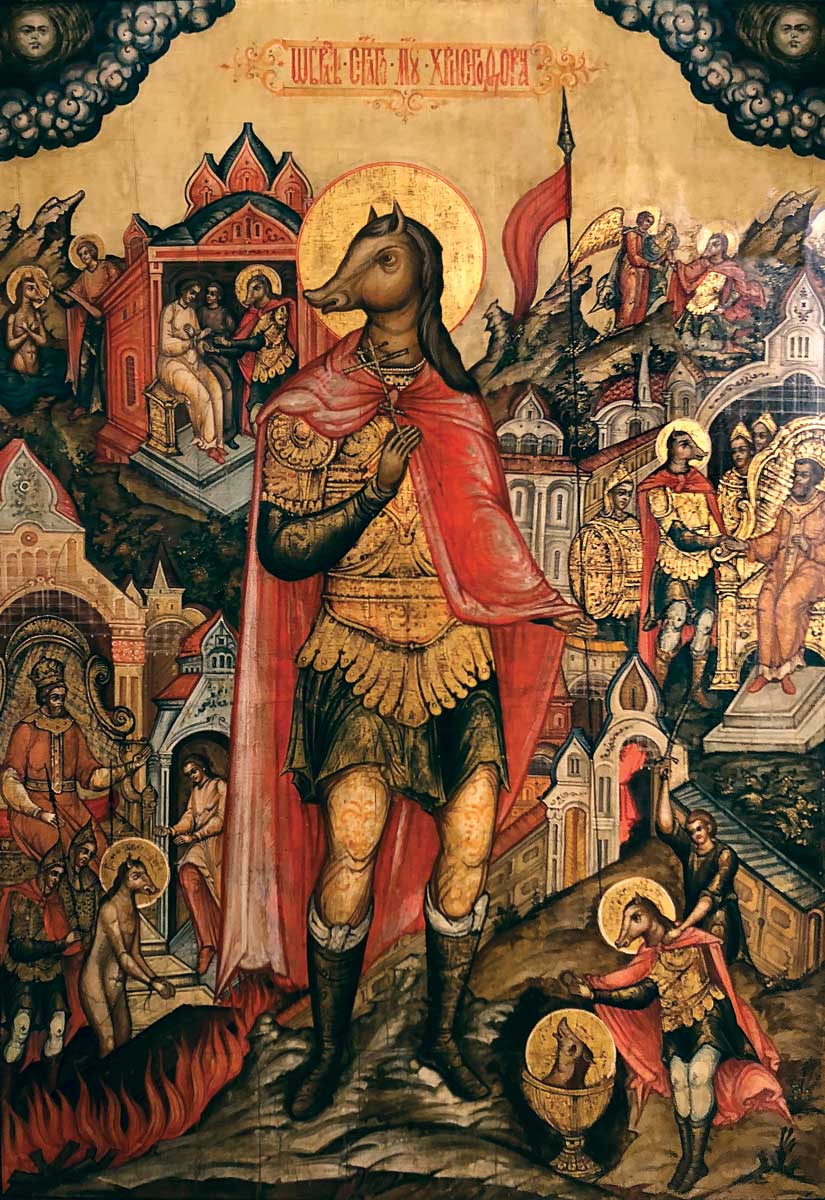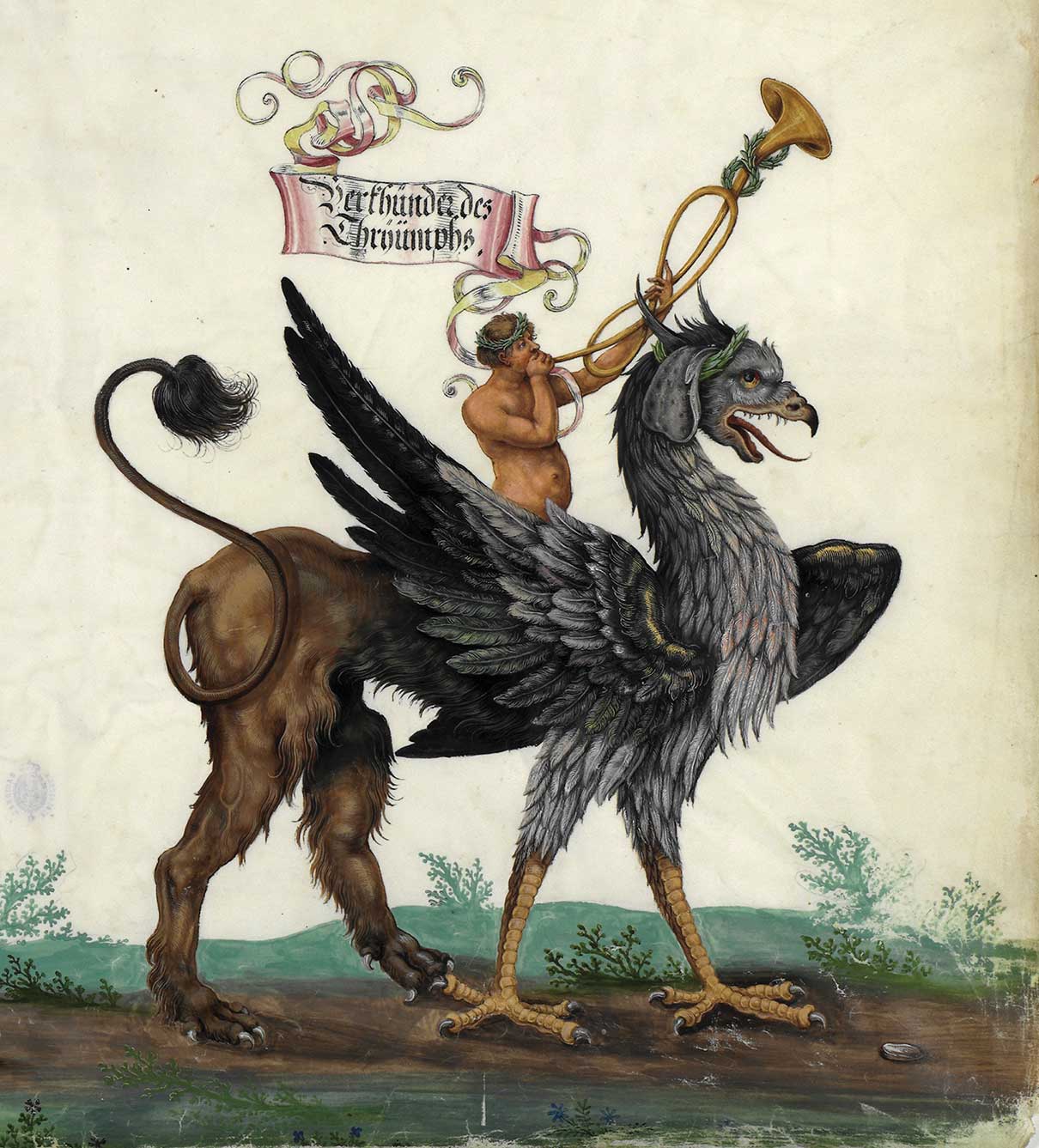“My dad’s term for that moment of collector’s recognition is ‘ping,’ when you see something that you instantly know you want to chase, whether you can actually afford it or not. I’ve always been grabbed by prints, maps, paintings, and books that are so strangely interesting that they seem almost out of place in their era, as though planted by a time traveler with a sense of humor.”
Examples hanging on Brooke-Hitching’s office wall include a painting of a diagonally divided heaven and hell from a seventeenth-century Zoroastrian manuscript and a colored original print of Athanasius Kircher’s map of the sun from his Mundus Subterraneus (1665) showing it covered by blue ocean with volcanoes at its poles.
“When the only guiding criterion for your collecting is that it should be a curiosity, you quickly end up with a harlequin gallimaufry of fascinating things. Fascinating to me, at least!”
His goal with The Madman’s Gallery was to open up the history of art for the general reader in the same way The Madman’s Library does with the rare book world, using curiosities to tell the stories. “I remember years ago learning about the existence of the Mona Vanna and wondering how on Earth I’d never heard of this nude version of the Mona Lisa, painted at the same time in the same studio and thought to be based on a lost original by Da Vinci himself. I wondered what other paintings, murals, and sculptures were out there that are rarely, if at all, included in bookshop art history texts. I was surprised to find I couldn’t find a book on art’s greatest curiosities, and so it seemed like a big niche to fill. General introductions quite rightly focus on the most important, the most revolutionary paintings, or as introductions to the principal genres of painting. I wanted to read a book of paintings that was a kind of alternative, back-alley journey through art history.”
Brooke-Hitching has just handed in the manuscript for the next book, which is LOVE: A Curious History in 50 Objects. “Really it’s an excuse to tell stories,” he said, “like how in eighteenth-century Corsica when a husband died his wife would gather her friends to toss him up and down on a blanket to see if he was faking to escape their marriage. Or how in the nineteenth century Austrian women would woo a man by dancing with a slice of apple in their sweaty armpit before presenting it for him to eat. Who wouldn’t leap at the chance to write about that?”



















